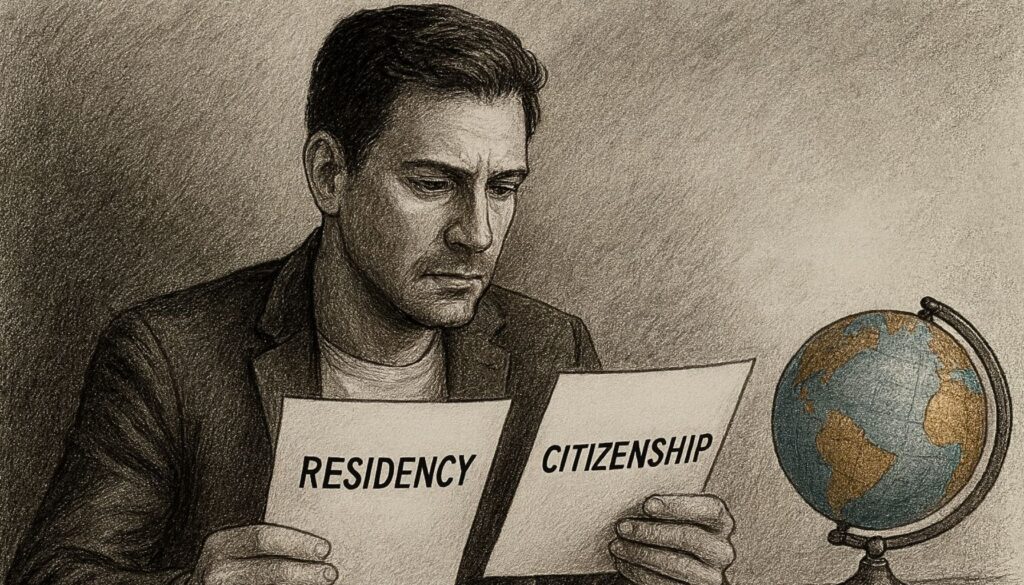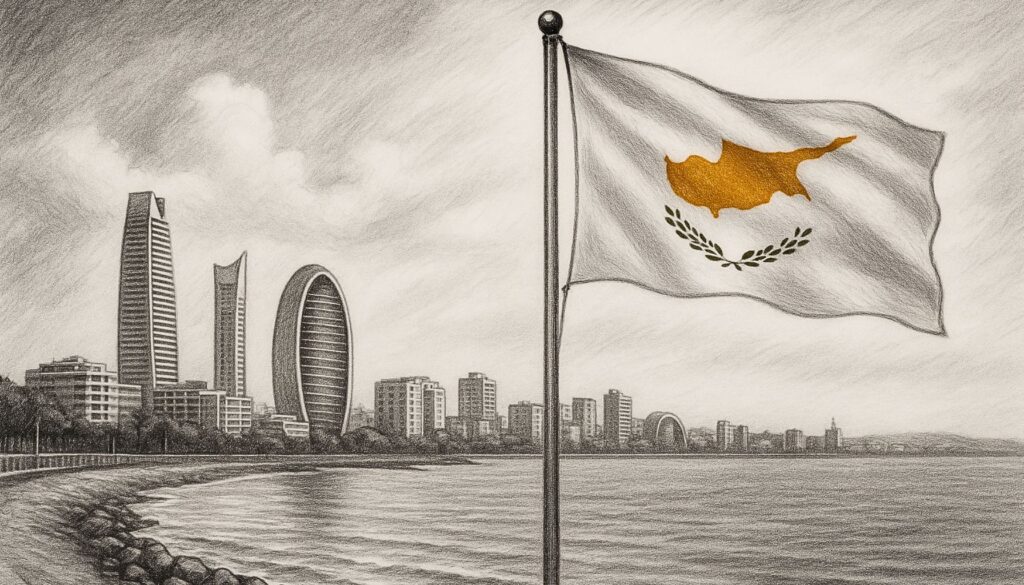In 2025, Europe is facing an unprecedented demographic storm. In our Comparative Guide: Countries with Tax Advantages and Youth, we explore how population decline is no longer just an academic theory it’s a growing reality threatening to sink the continent’s economy, pension systems, and social structure. According to Eurostat, by 2050, over 30% of Europeans will be over the age of 65, while birth rates continue to plummet.
But this isn’t just about numbers. It’s a fiscal and economic time bomb. Who will sustain the system when most are retired and there aren’t enough young people to produce, innovate, or simply pay taxes?
What’s worse: Europe saw this crisis coming. We’ve been hearing warnings for years about a model that punishes childbirth, discourages entrepreneurship, and suffocates the middle class with heavy taxation.
In this article, we’re not just showing you why Europe is falling apart we’ll analyze the countries heading in the opposite direction: emerging economies with healthy demographics, real tax advantages, and a future still worth living. If you’re looking to establish your tax residence beyond the chaos, this comparative analysis will give you clarity, data, and concrete direction.
Indice del artículo
What’s Happening with Europe’s Demographic Decline?
Europe is running out of babies. And that’s not just a figure of speech: the data backs it up. In 2023, only 3.67 million babies were born across the European Union, a chilling number compared to past decades.
The average fertility rate was just 1.38 children per woman, far below the minimum replacement level of 2.1 needed to sustain a stable population.
And how are things looking country by country? Not great.
Malta sits at the bottom with only 1.06 children per woman, while Bulgaria, the “least bad”, reached 1.81.

Book a consultation and let’s review your case.
Spain, Italy and France: When Having Children No Longer Fits the Budget
Spain keeps falling: in 2024, its fertility rate dropped to just 1.12 children per woman.
Italy isn’t far behind, with 1.24, and talk of a “baby desert” is no longer metaphorical.
And France? Once considered the “European exception” for its pro-natal policies, even it is slipping: the rate fell to 1.84 in 2022… and continues to decline.
Why Has Having Children Become a Luxury in Europe?
Spoiler: it’s not because people don’t want to. It’s because the system doesn’t let them.
The reasons behind this drop form an explosive cocktail:
Economic instability
Temporary jobs, stagnant wages, unaffordable rents. In this landscape, starting a family feels like a high-risk financial sport.
Skyrocketing cost of living
Electricity, food, rent, education, raising a child is practically a privilege for the few.
Nonexistent work-life balance
Many European countries still treat parenthood as a “personal problem.” With no real support and no time to raise children, couples think twice, or ten times, before taking the leap.
The Demographic Decline Is Already Taking Its Toll
This isn’t some distant dystopia. The consequences are already here, and some are ugly.
Fewer Workers, More Retirees: The Balance Is Breaking
With fewer people of working age and more retirees collecting pensions, the system is beginning to buckle.
Who’s going to support this in 10, 15, or 20 years? Some governments are already preparing serious tax adjustments, and that’s rarely good news.
It means higher taxes, fewer benefits, and a system that becomes more unsustainable by the day.
The Economic Impact of Europe’s Demographic Collapse
Europe isn’t just aging — it’s withering. The birth rate crisis has triggered a chain of effects that now threatens to dismantle the very economic pillars that sustained its prosperity for decades.
Low fertility is no longer a neutral statistic: it’s the warning sign of a financial collapse that will hit hardest those still trying to build a decent life from within the middle class.
The question is inevitable: Who will pay the taxes of the future?
While cribs remain empty and retirement homes overflow, the workforce is shrinking. And with it, so is the system’s ability to sustain itself.

Talk to us and explore your options.
The Tax Burden on the Young Middle Class
Today, millions of young people are working harder than ever, and receiving less than ever.
Wages are frozen, inflation won’t go away, and the State needs more revenue to cover an ever-growing pension bill. The result? A rising tax burden that’s choking the working class, especially the young. They pay more, get less. The social contract is broken.
Meanwhile, governments keep applying the only recipe they know: raise taxes.
But every extra point in tax pressure doesn’t just strangle the economy, it sends a clear message:
Prospering in Europe comes at a high price.
The Stagnation of Innovation and Productivity
Innovation needs oxygen. And today, Europe can barely breathe. Fewer young people means less entrepreneurship, fewer new ideas, and less capacity to reshape reality.
Companies are aging in sync with their societies, trapped in rigid structures that fail to grasp change. The result? A continent steadily losing competitiveness to younger, more dynamic, and bolder regions. This is no longer a distant threat. It’s a crisis silently eroding every economic advantage Europe once had.
Is There a Way Out of Europe’s Demographic Decline?
Europe is at a historical crossroads. The question is no longer whether the problem is serious, but whether there are effective, sustainable, and realistic solutions to Europe’s demographic decline.
In this section, we analyze why current policies are failing, and what’s truly needed to change course.
Solutions to Europe’s Demographic Decline That Aren’t Working
For years, governments have implemented measures to slow the drop in birth rates, yet the problem keeps getting worse.
We examine why traditional solutions are no longer enough.
Family Policies and Insufficient Subsidies
Child allowances, awareness campaigns, extended parental leave… Europe has leaned on traditional measures that fail to address the root of the problem: precarity, inflation, and a lack of confidence in the future.
Europe’s Fiscal Model vs. the Demographic Crisis
The European tax system was designed for a population pyramid that no longer exists.
Instead of structural reforms, governments apply fiscal patches that place an even greater burden on the young middle class.
The result? Brain drain, lower productivity, and rising social discontent.

The Urgent Need for Structural Reform
Faced with a scenario of aging populations, rising debt, and fiscal pressure, the only viable path forward lies in deep reforms that reorganize Europe’s tax, labor, and demographic systems.
The future of Europe depends on its ability to adapt to this new reality.
Comparative Guide: Countries with Tax Advantages and Youth
While Europe stumbles under the weight of its aging population and increasingly suffocating tax burden, the rest of the world offers more promising horizons.
Emerging countries with healthy birth rates, growing economies, and favorable tax regimes are quickly becoming real alternatives for those seeking financial freedom, quality of life, and long-term stability.
If you’re tired of holding up a collapsing system, it’s time to look toward destinations where your effort and talent are truly valued. Learn more HERE.
In this comparative guide to countries with tax advantages and youth, we show you the places that are now attracting the attention of investors, entrepreneurs, and digital nomads.

Schedule a call with our team.
Paraguay and Its Strategic Demographic Growth
When we talk about countries with a future, it’s not enough to look at the birth rate. You have to examine how the big pieces are moving: migration, infrastructure, economic growth, and long-term vision.
And on that board, Paraguay is making its move.
Yes, its fertility rate has dropped in recent years — currently around 2.2 children per woman — but that doesn’t mean the country is aging. Quite the opposite. Over 26% of the population is under the age of 15, and the demographic pyramid remains solid.
What’s interesting, however, is happening beyond the headlines: Paraguay is attracting people of working age. And not by accident.
Bioceanic Route: Not Just Trucks, but Talent
The so-called Bioceanic Route isn’t just an engineering project. It’s a geopolitical strategy. This corridor will connect the Atlantic and Pacific Oceans by cutting through the heart of Paraguay’s Chaco region.
A route of more than 500 kilometers that will move not only goods, but also labor, investment, and brains.
With infrastructure advancing — the first section already completed and the international bridge more than 65% built — Paraguay is becoming a magnet for skilled professionals, especially from Brazil, Argentina, and other neighboring countries looking for a more stable economy, less bureaucracy, and a friendlier fiscal environment.
And it’s already showing: every month, hundreds of new residents arrive in Paraguay, many of them in their prime working years, bringing ideas, capital, and energy.
In 2023, residency applications grew by more than 200% compared to the previous year.
These aren’t tourists. These are people building a future.
Territorial Tax System: Efficiency Without the Hassle
Add to this its territorial tax system, which exempts income earned outside the country.
If you’re a digital professional, an international investor, or simply someone who’s tired of financing collapsing systems, Paraguay offers a simple deal: live here, work from anywhere, and pay taxes only on what you earn inside the country. No more, no less.
And with a stable economy, moderate inflation, and a currency that doesn’t dance to the rhythm of politics, it’s easy to see why more and more entrepreneurs and digital nomads are choosing this small giant as their fiscal base in South America.
Paraguay doesn’t just give you room to breathe. It gives you direction.
And in 2025, that’s worth more than a thousand tax perks. Learn more HERE.
Panama and Its Strategic Youth: Taxation, Migration, and an Expanding Global Hub
While many countries are closing their borders or losing population, Panama is doing the exact opposite: attracting, growing, and positioning itself as a strategic refuge for both capital and people.
This isn’t just about paying fewer taxes — it’s about becoming part of a country that is quietly reinventing itself.
Population Growth and Skilled Migration: The New Engine
Unlike Europe, where fewer children are born each year and more workers are retiring, Panama continues to gain a young population — largely thanks to its migration policy and macroeconomic stability.
In 2023, Panama surpassed 4.4 million inhabitants, with a birth rate of 17.6 per 1,000 people — higher than most European countries.
But the most interesting part lies in who’s arriving: professionals from Colombia, Venezuela, Argentina, and the U.S. are settling in Panama, drawn by its steady growth and role as a regional hub.
According to Panama’s immigration data, the country granted over 47,000 new residencies in 2023, a large share of which went to people of working age (25 to 45), seeking a more favorable tax environment and a more predictable life than in their home countries.
A Country Designed to Welcome Both Capital… and People
Panama doesn’t just enjoy an enviable geographic location — it also has something that’s increasingly rare in the Spanish-speaking world: strategic vision.
Programs like the Friendly Nations Visa, the Qualified Investor Visa, and the company-formation residency path were created to attract professionals, entrepreneurs, and digital nomads with resources.
And it’s no accident: beyond its territorial tax system (which exempts foreign-sourced income), Panama understands that its greatest asset isn’t just the Canal — it’s the people who choose to settle and build a future here.
Demographics and Tax Policy Working in Harmony
Panama has a median age of 29 — far below Europe’s average of over 44.
Its population is young, its job market is active, and its healthcare and education infrastructure is expanding, making it not only a business hub, but also a viable destination for families.
While Europe ages and pushes talent away through tax saturation, Panama welcomes it, integrates it, and offers something that’s in short supply: clear rules, competitive taxation, and a growing economy.
In other words: Panama is one of the few countries where youth, skilled migration, and tax benefits coexist in real balance. Learn more HERE.
Philippines: Youth, Territorial Taxation, and Asian Expansion
While Europe grows older and pushes talent away, the Philippines offers the exact opposite: a young, dynamic country with tax policies that reward global investors and professionals.
With a median age of just 23 and a fertility rate of 2.9 children per woman, the Philippines maintains one of the healthiest demographic structures in Southeast Asia.
This youth isn’t just a statistic: it’s workforce, internal consumption, and adaptability. And the government knows it.
That’s why, since 2024, they’ve doubled down on efforts to attract foreign investment and global talent — lowering the corporate tax rate to 20% and reinforcing a territorial tax model that already benefits thousands of foreigners.
Unlike other Asian countries that are more closed or bureaucratic, the Philippines is accessible, English-speaking, and increasingly digital — with sectors like tech, remote services, and e-commerce growing at double-digit rates.
For many, it’s the gateway to Asia — without having to sacrifice tax benefits or lifestyle.
You don’t come here to escape the system. You come to build your own.
Uruguay: Institutional Stability in an Aging Country
Uruguay isn’t young — and the numbers make that clear: a median age of 35, nearly zero population growth, and one of the highest aging rates in all of Latin America.
But unlike Europe, here, decline doesn’t go hand in hand with chaos — it comes with order.
The difference? A solid legal framework, predictable tax policies, and a robust financial system — making Uruguay a regional exception.
While many Latin American countries are reinventing themselves through conflict, Uruguay evolves through stability.
Despite its demographic challenges, the country has managed to open its doors to investors.
The Investment Law allows for temporary tax exemptions and equal treatment for both foreigners and locals.
And while its tax system isn’t as competitive as Paraguay’s or Panama’s, it offers something just as valuable: certainty, quality of life, and long-term predictability.
In a world that changes at crisis-speed, Uruguay allows you to plan long-term — no surprises.
For those who prioritize safety, family, and legal peace of mind, it remains a highly respectable fiscal base in the Southern Cone.
What Really Matters When Choosing a Country with Tax Advantages and Youth?
Packing your bags and fleeing Europe’s fiscal chaos isn’t enough.
If you truly want to settle in a new country — with your business, your family, or your life project — you need to assess things smartly.
This comparative guide on countries with tax advantages and youth is not just a demographic ranking: it’s a warning and a roadmap.

Reserve your consultation now.
High Birth Rates Don’t Automatically Mean Development
A high birth rate can be a positive sign, sure. It speaks of a young population, available energy, and labor force potential.
But it doesn’t guarantee progress. In fact, without the infrastructure to support it, that population growth can quickly become a structural problem.
The Case of Niger as a Warning
Niger has one of the highest fertility rates in the world — over 6 children per woman — but also one of the most extreme poverty levels on the planet.
It’s the perfect example of why looking at birth rates alone isn’t enough: without development and structured tax systems, high fertility becomes a social time bomb.
What Should an Ideal Country Offer in 2025? Balance between birth rate, economic development, and competitive taxation
The best countries for tax nomads and investors in 2025 share three essential characteristics:
Functional Basic Infrastructure
Decent roads, stable electricity, good internet, and access to healthcare and education.
We’re not asking for luxury — we’re asking for the minimum to run a business and live without depending on your own generator or satellite connection.
Territorial Taxation or Low Effective Tax Rates
Countries with territorial tax systems or low income tax burdens have become safe havens for those who no longer want to fund broken systems.
The key is predictability: clear rules, long-term stability, and no fine print.
Legal Certainty and Political Stability
There’s no investment without legal security.
Institutions must function, laws must be respected, and the political environment should offer peace — not constant uncertainty.
This is the difference between a good place to live… and a trap disguised as an opportunity.
If you want to discover the best countries for nomad families in 2025, click here.
Conclusion: How to Secure Your Future Through Smart Tax Planning

Book a call with us today.
In a world where Europe’s birth rate crisis and aging population threaten economic sustainability, the tax burden on young workers is becoming increasingly suffocating.
Nomad, the world is full of opportunities for those who dare to look beyond traditional borders.
While some countries sink into demographic and fiscal collapse, others are rising as new promised lands.
The choice is yours: will you stay anchored to a system that’s falling apart, or will you dare to seek horizons where your effort is truly valued?
Book a consultation with our team and start building a tax strategy that makes sense.
Your future won’t wait.



